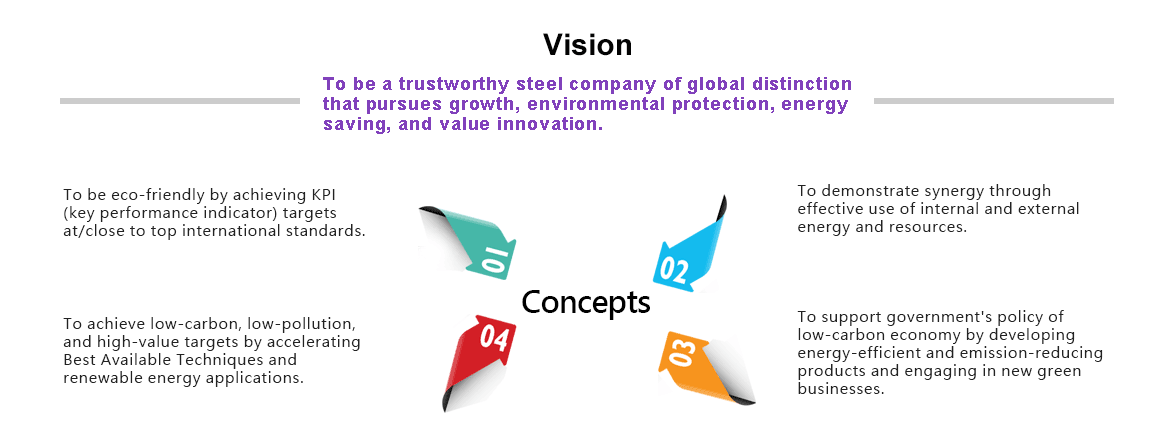


In 1997, CSC obtained ISO 14001-Environmental Management System (EMS) certification and received the approval of ISO 14001: 2015 certification in 2018. CSC then combined EMS with OHSAS 18001 into the CSC EHS Management System, launched in 2005. Strategic decisions are made by Committee for EHS Management, chaired by the Executive VP. EHS policies are approved by the Chairman of the Board before implementation and subject to annual external audit.
| Name of System | ISO 14001 EMS International Certification |
ISO 50001 Energy Management System |
CNS 45001/ ISO 45001 Occupational Safety Management System |
|---|---|---|---|
| Ratio of employees and contractors | 100% | 100% | 100% |
Note: The workplaces covered by the system are the main areas where contractors perform their work. Hence, the system includes 100% of contractor personnel.
| Care for Life | Respect life, practice environmental protection, safety, and health management to prevent occupational injury and illness and promote employee health. |
|---|---|
| Risk Management | Assess risks and environmental aspects. Reinforce risk control and pollution prevention. |
| Training and Communication | Educate employees with EHS concepts, establish a self-motivation culture, encourage the involvement of employee and contractors, and strengthen communication with stakeholders building a harmonious relationship with communities. |
| Legal Compliance | Reinforce the identification and execution of legal requirements and strengthen correction and prevention actions, fully fulfill corporate social responsibility. |
| Improvement | Promote zero accident, energy conservation, and emission reduction; improve EHS performance and pursue sustainable operations. |
The EHS Management Committee holds two meetings every year, convening the first-level units of the production division and first-level supervisors from relative units to discuss EHS relevant management issues, and review tracked projects. The relative units include the Iron and Steel R&D Dept., Metallurgical Dept., Intellectual Property & Testing Technology Dept., New Materials R&D Dept., Green Energy and System Integration R&D Dept., Transportation Dept., General Affairs Dept., Smelting Engineering Dept., Rolling & Utilities Engineering Dept., and Civil Engineering Dept., By tracking and examining discussion and resolutions during each meeting, the goal of continuous improvement can be met.